Sun Ra
American Free-Jazz composer, pianist and band leader. Widely recognized as music innovator, pioneer of free improvisation and modal jazz, and early user of electronic keyboards and synthesizers. Born as Herman Poole Blount, he legally changed his name into Le Sony'r Ra on October 20, 1952. Born: May 22, 1914 in Birmingham, Alabama Died: May 30, 1993 in Birmingham, Alabama Born and raised in Alabama, Herman Blount, nicknamed “Sonny” by his family, proved to be a skilled pianist since a young age. He was able to sight-read and compose music by the age of 11 and performed semi-professionally as a solo pianist or member of local Jazz and R&B bands as a teenager. His first full-time musical job was proposed in 1934 by [a10739743], his biology teacher from high school, who had organized a band to pursue a career as a singer. When Ms. Harper moved to New York, he took the lead of the band, renaming it Sonny Blount Orchestra. The band disbanded shortly after, but Blount continued to work steadily as a musician in Birmingham. Between 1936 and 1937 he left college, which he attended for only one year, after a visionary experience which greatly influenced his life: during a deep meditation state, he claimed to have been transported to the planet Saturn by beings from outer space who entrusted him with the mission to preach peace through music, in a world that was going into chaos. In the following years, Blount transformed the first floor of his family's house into a conservatory-workshop where musicians could come and go at any time and he could discuss religious and esoteric concepts with whoever was interested. In 1945, he moved to Chicago where he was influenced by the African-American political activist fervor in the city. He soon abandoned his birth name, taking the name Le Sony'r Ra, shortened to Sun Ra (after Ra, the Egyptian god of the Sun). Musically, he worked and performed for [a311739], [a322287], [a307323], [a251769] and [a311734]. In 1952, Sun Ra ensembled and led a trio with the drummer [a367763] and saxophonist [a252025], forming the first nucleus of what will shortly become [a2219395]. When Patrick moved to Florida (he will continue to get in and out of the Arkestra for decades to come), saxophonists [a252034] and [a252033] join the group. In the same years, Sun Ra met [a356555] a precociously intelligent teenager that quickly became his closest friend and, practically, his business manager. Together, in the mid '50s, they founded the independent label called [l86748], initially focused on 45 rpm singles by Sun Ra and artists related to him. However, Sun Ra's first album was released in 1957 by the producer [a253021] with another independent label, [l26409]. In the late 1950s, Sun Ra and his band began to wear outlandish, Egyptian-styled or science fiction-themed costumes and headdresses. This style, which can be defined in retrospect as “Afrofuturistic”, will become the trademark that will make the Arkestra recognizable even on stage. In the Fall of 1961, the group moved to New York City where Sun Ra and his band members lived communally to save money. In the mid '60s, the Arkestra used to perform regularly at [l319067]. At this point, Sun Ra's popularity started to increase among followers of the beat generation and early psychedelia, also receiving much praise from music critics and major names of the New York jazz scene. In 1968, when the New York building they were renting was put up for sale, Sun Ra and the Arkestra relocated to the Germantown section of Philadelphia. Hereafter, the Sun Ra house on Morton Street became the Arkestra's base of operations, until his death. That same year, they made their first tour of the US West Coast and, a few months later, Sun Ra was featured on the cover of Rolling Stone magazine, introducing him to the national public. In 1970, the Arkestra began to tour internationally with concerts in France, Germany and the United Kingdom . For the next three decades, the band's touring and recording activity would not stop, becoming a point of reference for the musical avant-gardes. Sun Ra kept composing, performing, and leading the Arkestra, even after he had a stroke in 1990. In late 1992, Sun Ra returned to his birth city of Birmingham to live with his older sister, Mary Jenkins, who (along with various Blount cousins) became his caretaker until his death, which occurred on May 30, 1993.
Releases
-
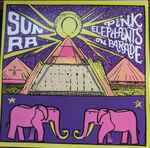 Pink Elephants On Parade
Pink Elephants On Parade
-
 Somewhere In Space
Somewhere In Space
-
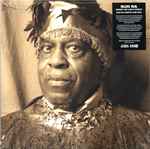 Inside The Light World (Sun Ra Meets The OVC)
Inside The Light World (Sun Ra Meets The OVC)
-
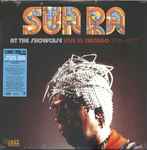 At The Showcase: Live In Chicago 1976-1977
At The Showcase: Live In Chicago 1976-1977
-
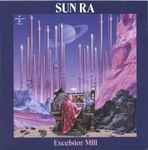 Excelsior Mill
Excelsior Mill
-
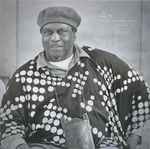 Interview With Charlie Morrow
Interview With Charlie Morrow
-
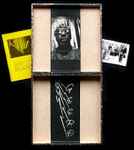 1st recordings, the Chicago years
1st recordings, the Chicago years
-
 Prophet
Prophet
-
 On Jupiter
On Jupiter
-
 Celestial Love
Celestial Love
-
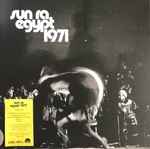 Egypt 1971
Egypt 1971
-
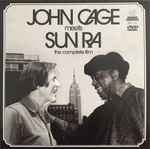 John Cage Meets Sun Ra
John Cage Meets Sun Ra
-
 ESP在中国 = ESP-Disk' Cassette Boxset
ESP在中国 = ESP-Disk' Cassette Boxset
-
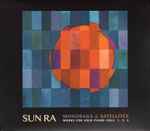 Monorails & Satellites (Works For Solo Piano Vols. 1, 2, 3)
Monorails & Satellites (Works For Solo Piano Vols. 1, 2, 3)
-
 Haverford College 1980 Solo Piano
Haverford College 1980 Solo Piano
-
 Solo Keyboards, Minnesota 1978
Solo Keyboards, Minnesota 1978
-
 Solo Piano At WKCR, 1977
Solo Piano At WKCR, 1977
-
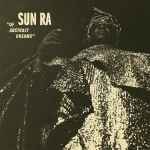 Of Abstract Dreams
Of Abstract Dreams
-
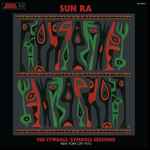 The Cymbals / Symbols Sessions: New York City 1973
The Cymbals / Symbols Sessions: New York City 1973
-
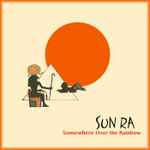 Somewhere Over The Rainbow
Somewhere Over The Rainbow
-
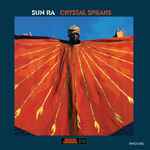 Crystal Spears
Crystal Spears
-
 Hello Mr. Schimmel
Hello Mr. Schimmel
-
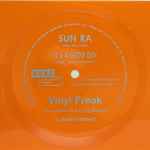 It's A Good Day
It's A Good Day
-
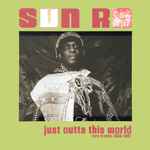 Just Outta This World - Rare Tracks 1955-1961
Just Outta This World - Rare Tracks 1955-1961
-
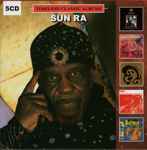 Timeless Classic Albums
Timeless Classic Albums
-
 It's After The End Of The World, Don't You Know That Yet? Infinite Sun Ra Hits # 2
It's After The End Of The World, Don't You Know That Yet? Infinite Sun Ra Hits # 2
-
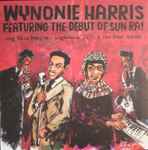 Dig This Boogie / Lightnin' Struck The Poor House
Dig This Boogie / Lightnin' Struck The Poor House
-
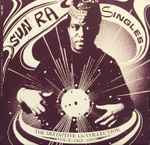 Singles Volume 2 (The Definitive 45s Collection 1962-1991)
Singles Volume 2 (The Definitive 45s Collection 1962-1991)
-
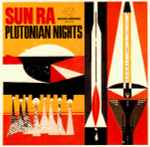 Plutonian Nights
Plutonian Nights
-
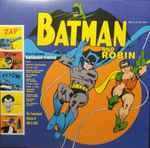 Batman And Robin
Batman And Robin
-
 Exotica
Exotica
-
 To Saturn And Back (The Best Of)
To Saturn And Back (The Best Of)
-
 Nuclear War
Nuclear War
-
 Fate In A Pleasant Mood / Bad And Beautiful
Fate In A Pleasant Mood / Bad And Beautiful
-
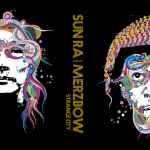 Strange City
Strange City
-
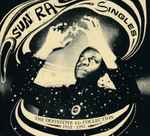 Singles (The Definitive 45s Collection 1952–1991)
Singles (The Definitive 45s Collection 1952–1991)
-
 Singles Volume 1 (The Definitive 45s Collection 1952-1961)
Singles Volume 1 (The Definitive 45s Collection 1952-1961)
-
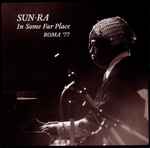 In Some Far Place: Roma '77
In Some Far Place: Roma '77
-
 Duke Ellington’s Sound Of Space
Duke Ellington’s Sound Of Space
-
 The Early Singles 1955-1962
The Early Singles 1955-1962
-
 Sun Ra (The Complete Remastered Recordings On Black Saint & Soul Note)
Sun Ra (The Complete Remastered Recordings On Black Saint & Soul Note)
-
 Graffiti
Graffiti
-
 Angels And Demons At Play
Angels And Demons At Play
-
 The Futuristic Sounds Of Sun Ra
The Futuristic Sounds Of Sun Ra
-
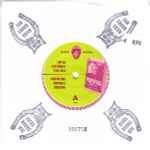 Sun Ra Centennial 1914-2014 - Prophetika Memorial Souvenir
Sun Ra Centennial 1914-2014 - Prophetika Memorial Souvenir
-
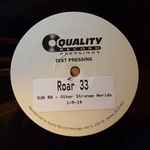 Other Strange Worlds
Other Strange Worlds
-
 Views Of Saturn Vol.3
Views Of Saturn Vol.3
-
 Continuation
Continuation
-
 A Space Odyssey (From Birmingham To The Big Apple - The Quest Begins)
A Space Odyssey (From Birmingham To The Big Apple - The Quest Begins)
-
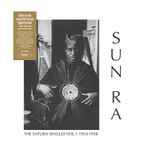 The Saturn Singles Vol. 1 1954-1958
The Saturn Singles Vol. 1 1954-1958
 Pink Elephants On Parade
Pink Elephants On Parade
 Somewhere In Space
Somewhere In Space
 Inside The Light World (Sun Ra Meets The OVC)
Inside The Light World (Sun Ra Meets The OVC)
 At The Showcase: Live In Chicago 1976-1977
At The Showcase: Live In Chicago 1976-1977
 Excelsior Mill
Excelsior Mill
 Interview With Charlie Morrow
Interview With Charlie Morrow
 1st recordings, the Chicago years
1st recordings, the Chicago years
 Prophet
Prophet
 On Jupiter
On Jupiter
 Celestial Love
Celestial Love
 Egypt 1971
Egypt 1971
 John Cage Meets Sun Ra
John Cage Meets Sun Ra
 ESP在中国 = ESP-Disk' Cassette Boxset
ESP在中国 = ESP-Disk' Cassette Boxset
 Monorails & Satellites (Works For Solo Piano Vols. 1, 2, 3)
Monorails & Satellites (Works For Solo Piano Vols. 1, 2, 3)
 Haverford College 1980 Solo Piano
Haverford College 1980 Solo Piano
 Solo Keyboards, Minnesota 1978
Solo Keyboards, Minnesota 1978
 Solo Piano At WKCR, 1977
Solo Piano At WKCR, 1977
 Of Abstract Dreams
Of Abstract Dreams
 The Cymbals / Symbols Sessions: New York City 1973
The Cymbals / Symbols Sessions: New York City 1973
 Somewhere Over The Rainbow
Somewhere Over The Rainbow
 Crystal Spears
Crystal Spears
 Hello Mr. Schimmel
Hello Mr. Schimmel
 It's A Good Day
It's A Good Day
 Just Outta This World - Rare Tracks 1955-1961
Just Outta This World - Rare Tracks 1955-1961
 Timeless Classic Albums
Timeless Classic Albums
 It's After The End Of The World, Don't You Know That Yet? Infinite Sun Ra Hits # 2
It's After The End Of The World, Don't You Know That Yet? Infinite Sun Ra Hits # 2
 Dig This Boogie / Lightnin' Struck The Poor House
Dig This Boogie / Lightnin' Struck The Poor House
 Singles Volume 2 (The Definitive 45s Collection 1962-1991)
Singles Volume 2 (The Definitive 45s Collection 1962-1991)
 Plutonian Nights
Plutonian Nights
 Batman And Robin
Batman And Robin
 Exotica
Exotica
 To Saturn And Back (The Best Of)
To Saturn And Back (The Best Of)
 Nuclear War
Nuclear War
 Fate In A Pleasant Mood / Bad And Beautiful
Fate In A Pleasant Mood / Bad And Beautiful
 Strange City
Strange City
 Singles (The Definitive 45s Collection 1952–1991)
Singles (The Definitive 45s Collection 1952–1991)
 Singles Volume 1 (The Definitive 45s Collection 1952-1961)
Singles Volume 1 (The Definitive 45s Collection 1952-1961)
 In Some Far Place: Roma '77
In Some Far Place: Roma '77
 Duke Ellington’s Sound Of Space
Duke Ellington’s Sound Of Space
 The Early Singles 1955-1962
The Early Singles 1955-1962
 Sun Ra (The Complete Remastered Recordings On Black Saint & Soul Note)
Sun Ra (The Complete Remastered Recordings On Black Saint & Soul Note)
 Graffiti
Graffiti
 Angels And Demons At Play
Angels And Demons At Play
 The Futuristic Sounds Of Sun Ra
The Futuristic Sounds Of Sun Ra
 Sun Ra Centennial 1914-2014 - Prophetika Memorial Souvenir
Sun Ra Centennial 1914-2014 - Prophetika Memorial Souvenir
 Other Strange Worlds
Other Strange Worlds
 Views Of Saturn Vol.3
Views Of Saturn Vol.3
 Continuation
Continuation
 A Space Odyssey (From Birmingham To The Big Apple - The Quest Begins)
A Space Odyssey (From Birmingham To The Big Apple - The Quest Begins)
 The Saturn Singles Vol. 1 1954-1958
The Saturn Singles Vol. 1 1954-1958